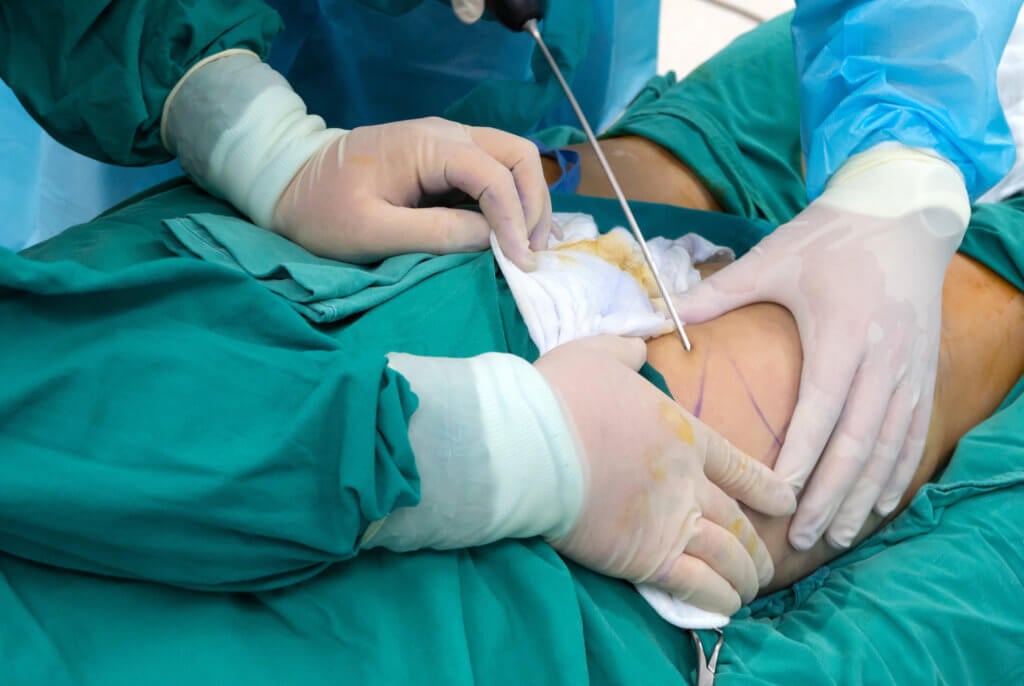According to the American Society of Plastic Surgeons, liposuction is one of the most popular cosmetic surgeries in the United States. Each year, millions of patients each target and eliminate fat with this invasive procedure.
Increasing demand often drives innovation, and this case is no exception. In recent years, several new methods have been developed to increase the efficiency of liposuction. Most of these involve the liquefication of fat before its removal using a variety of tools, such as lasers, tumescent solutions, and rapidly vibrating suction tools, called cannulas.
Even though there are several types of liposuction, today we are going to focus our scope on Ultrasound-Assisted Liposuction, or UAL for short.
What is Ultrasound-Assisted Liposuction?
UAL is a cosmetic procedure where the surgeon uses ultrasonic frequency waves to liquefy the patients’ fat in targeted areas. This material is then later suctioned out through a cannula or small medical vacuum.
Also known as VASER Liposuction, which stands for Vibration Amplification of Sound Energy at Resonance, this specialized ultrasound medical technology breaks down fat cells in stubborn areas. Body parts typically targeted by patients include the knees, neck, chin, feet, and ankles.
How Does Ultrasound-Assisted Liposuction Work?
There are two different types of Ultrasonic-Assisted Liposuction: Noninvasive, External Ultrasonic Liposuction, and Invasive, Internal Ultrasonic Liposuction. Both of them involve ultrasonic frequency waves, but are performed entirely differently.
External Ultrasonic Liposuction uses a paddle-like tool that emits ultrasonic waves and vibrations outside the body and above the skin. Fat is eliminated without incisions or surgery, meaning recovery is much faster than traditional liposuction or internal UAL.
One downside to noninvasive ultrasonic liposuction is that the vibrations and waves applied directly to the skin can cause skin necrosis and bruising. The procedure can also potentially debilitate the patient’s nervous system, reducing feeling in the targeted area.
Internal Ultrasonic Liposuction is a procedure that involves the surgeon inserting a probe into the patient’s targeted area. This probe emits ultrasonic vibrations that break up the fat. After this initial step, the rest of the procedure resembles traditional liposuction, with the doctor removing the broken-down fat with a suction tool called a cannula. This cosmetic surgery is invasive, so risks such as scarring, skin loss, abdominal holes, and nerve damage are all possible. There’s also a risk of infection — just as with any surgery.

How Does UAL Compare With Traditional Liposuction?
One of the significant benefits of VASER Liposuction compared to traditional liposuction is the minor damage done to surrounding tissues. VASER, or Internal UAL, uses smaller incisions, ultrasonic waves, and vibrations to liquefy the fat. This step makes it easier to remove the fat, which in turn reduced the potential damage to surrounding areas during the process.
Recovery is also noticeably faster than other liposuction methods. According to The American Society of Plastic Surgeons (ASPS), recovery can last from several days to a couple of weeks in an extreme case. Doctors recommend moderate exercise, such as walking or yoga, after a few days have passed following the surgery. These steps will help with blood flow and swelling.
Finally, because the procedure can often be done with local anesthesia while the patient remains awake, it is less risky than processes involving general anesthesia.
How Much Does VASER Liposuction Cost?
The American Society of Plastic Surgeons (ASPS) estimates that the average liposuction costs $3,200. Keep in mind that this amount may vary depending on the area of the body treated, operating facilities, doctors’ fees, and hospitalization if required.
Be sure to ask for financing or payment methods as most health insurance plans do not cover cosmetic surgeries such as liposuctions or its complications.
